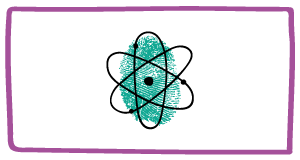How EdTech Helps Students with Special Educational Needs
Students with special education needs (SEN) make up about 13 per cent of our school population. Students with SEN in our schools are not precisely a monolith, and neither are their learning needs. There are various learning challenges that students with SEN face along with several coexisting conditions that not only affects their learning but also their behavior and personality.
Trying to teach students with different learning needs with limited resources that conventional method offer has proved to be hard. Data from neuroscience shows us that difficulty with executive functions of the brain is the most prominent coexisting condition with learning disabilities and this affects the memory, attention, and processing rate that does pose a significant challenge to what students learn and how fast.
In the context of COVID 19, our SEN students have suffered more. School closures and teaching remotely has resulted in the learning erosion, especially our vulnerable learners. The current U.S. government data indicates that the COVID slide has resulted in a further decline in literacy skills amongst students with learning challenges.
SEN students suffer from learning gaps that are hard to fill and time spent in remedial learning is crucial. As an educator, we need to find ways of making a difference in shorter sprints. Ed-tech gives us that opportunity to achieve learning gains faster than any conventional method. Digital learning solutions have the potential to give layers of support that can accelerate learning. It can make learning accessible for all our SEN students and help them meet their individual learning goals.
Accessible teaching is good teaching. Maintaining clarity and structure is essential for students with accessibility needs. Ed -Tech can give that opportunity to our struggling learners. Digital devices, software, and learning platforms offer a once-unimaginable array of options for tailoring education to each student’s academic strengths and weaknesses, interests and motivations, personal preferences, and optimal pace of learning. It can give SEN students the personalized learning experience, that is so important for their progress. Educational technology also provides immediate reinforcement on every correct response and corrective feedback on error response; this is important in the learning process, as it keeps the student constantly motivated and engaged.
In recent years, a group of organizations including the Bill & Melinda Gates Foundation, the Michael & Susan Dell Foundation, and EDUCAUSE have crafted a definition of “personalized learning” that rests on four pillars:
- Each student should have a “learner profile” that documents his or her strengths, weaknesses, preferences, and goals.
- Each student should pursue an individualized learning path that encourages him or her to set and manage personal academic goals.
- Students should follow a “competency-based progression” that focuses on their ability to demonstrate mastery of a topic, rather than seat time.
- Students’ learning environments should be flexible and structured in ways that support their individual goals.
Ed-Tech has the potential to meet all those four needs for our SEN students and brings for them inclusion and growth.
During this year of unprecedented chaos, as educators, we must make a concerted effort to express interest in our students as individuals. The kind of help the students receive, especially our struggling learners’ shapes not only their learning goals but also their personality. Using Ed -Tech and the consistency it brings, we can all hinge on the neuroplasticity of our student’s brains to make progress faster, especially for our SEN students.
Ed- Tech also plays a vital role in providing emotional wellbeing for our SEN students. It helps the student have the growth mindset, gives them small opportunities to succeed that builds self-esteem, goes at each individuals pace to keep their interest and motivation in learning, gives them end amount of repetition without bringing the sense of shame or humiliation and brings them the joy of learning that is so crucial in students’ engagement.
School-based research in the U.S. has shown that student engagement is critical and essential for any learning progress. Hence, dynamic technological learning solutions that are engaging do serves us best to help our SEN students.
Author: Massrat Shaikh, Educational Psychologist and Edupreneur, Al Ahlam Training & Higher Education Services


